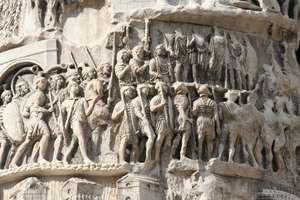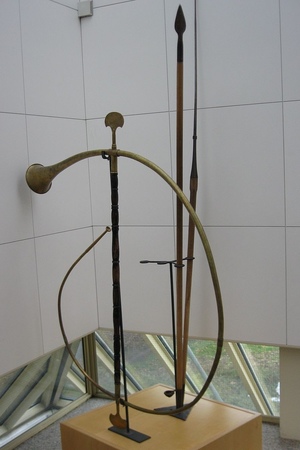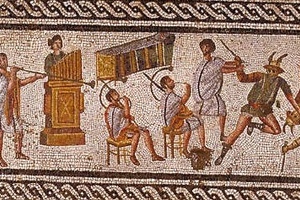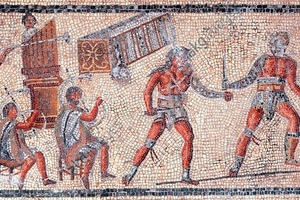Cornicen
Cornicen (Latin: Cornicen) was a legionary trumpeter who played the brass instrument known as cornu. They were positioned next to the standard-bearer, providing general-purpose sound commands.
The cornicen most likely performed the same functions as the bucinator and tubicen. In the camp, they signaled the changing of the guard, the arrival of a legate, emperor, or military commander, as well as the proclamation of various orders and death sentences. During marches, they typically sounded signals for "advance," "to battle," "drop anchor," and so on. Cornicenes belonged to the junior officers, known as principales.
Cornu (Latin: cornu - horn) was a wind musical instrument in Ancient Rome.
The cornu resembled the buccina, having a rounded shape, but it was longer, reaching up to 3 meters. The sounds produced by these two instruments were likely similar in tone and strength. Cornu was most likely used, like the tuba and buccina, for signaling in the Roman army and during ceremonies.
A distinctive feature of Roman military musicians was the animal skin draped over the helmet and tied with the forelimbs on the chest, similar to other members of the legion's signal group. They were armed with a gladius and pugio. As protective equipment, cornicenes wore either lorica hamata or lorica squamata, and a small round shield called a parma, which was worn on the side with a strap.
Related topics
Legion Banner Group, Bucinator, Tubucen, Roman Army helmets, Gladius, Pugio, Lorica Hamata, Lorica Squamata, Parma
Literature
- E. V. Hertzman. Music of Ancient Greece and Rome

 Gallery
Gallery












